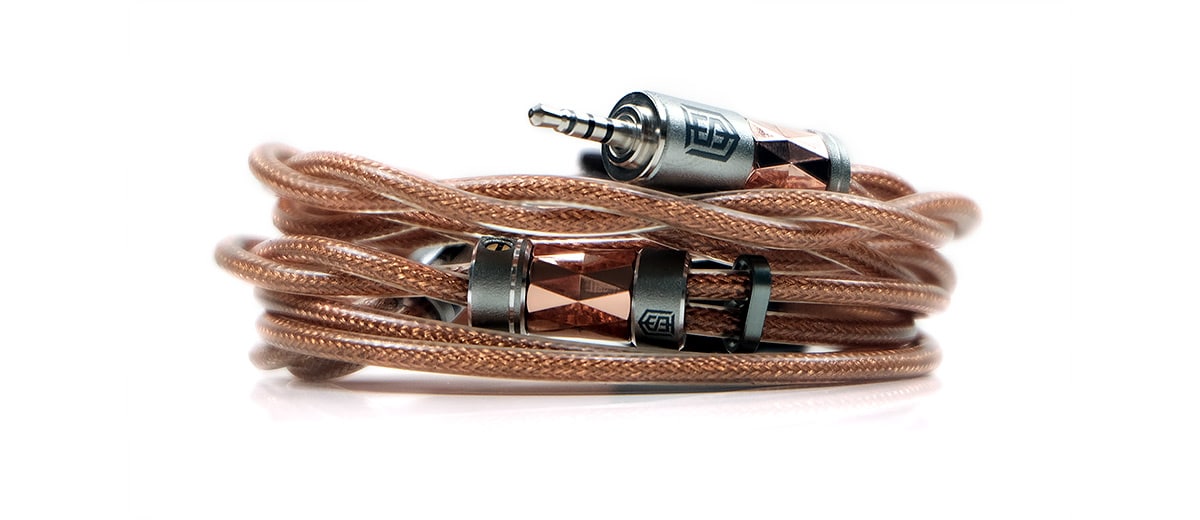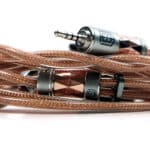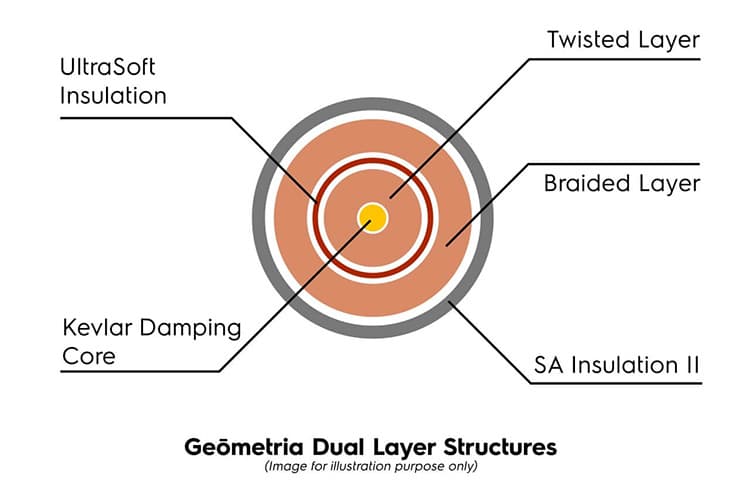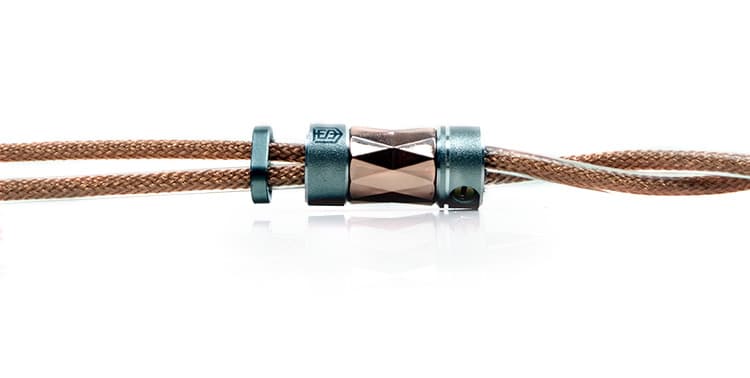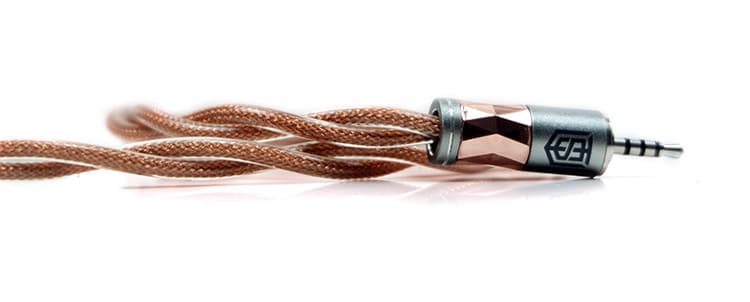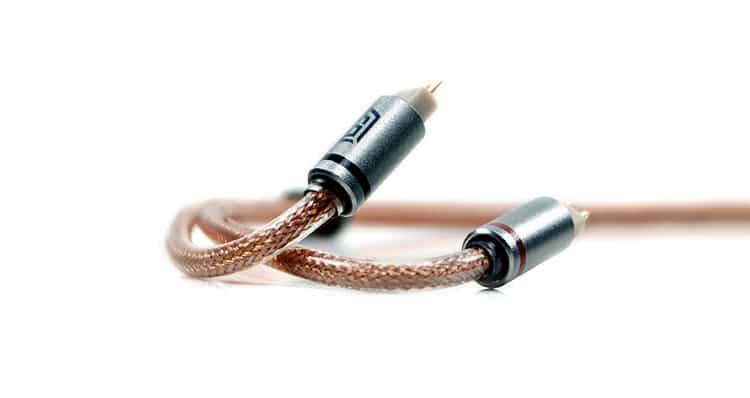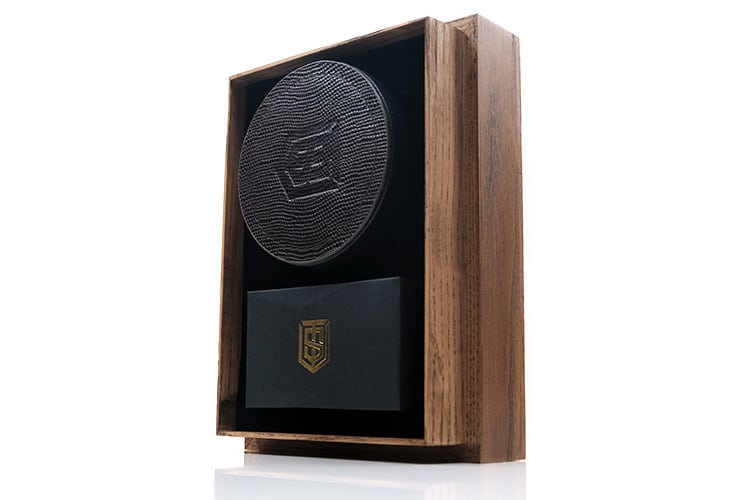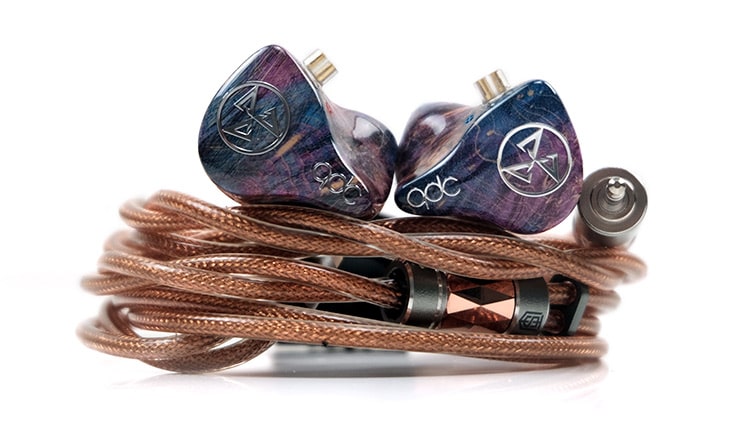This is an in-depth review of the Satin Audio Perseus which is an aftermarket IEM cable with a dual 23AWG/26AWG pure copper design. It is priced at $699.
Disclaimer: This sample was sent to us in exchange for our honest opinion. Headfonics is an independent website with no affiliate links. We thank Satin Audio for this opportunity.
To read more about Satin Audio products we reviewed on Headfonics, click here.
Note, that this article follows our latest scoring guidelines which you can read in more detail here.
Our last Satin Audio cable review was a bit over 2 years ago with the flagship Zeus from their Olympus Series. Since then, they have opened up another series of cables called the Warrior Series, of which Perseus is currently the only residing member.
It does come in a lot cheaper than the Zeus though by no means a budget meal entry at $699. However, what it does bring to the table is some entirely new construction methodologies as well as being our first official copper IEM cable from Satin Audio that we have had the pleasure of reviewing.
Tech Highlights
Materials & Wire
Satin Audio has opted to go with an SP-OCC grade of pure copper wire for the Perseus with the SP standing for super pure.
The company does not state the N grade of the OCC copper but rather that it is to an audio grade level which could be anywhere from 4N to 7N.
What we do know from our previous reviews is that SP has been a grade the company has used before and is typically between a 6N, (99,99998%) and 7N, (99,999998%), purity level which is about as high as you can get.
Unusually, there are two gauges of SP-OCC wire inside the Perseus, a 23AWG and a 26AWG. The best way to think of how they are put together is kind of like a wrap with the 26AWG on the inside and the smaller 23AWG on the outside.
Rather than individual gauges of copper wire running side by side, they are in actual fact, multi-sized threads wrapped around each other to create one unique 2-wire build for the Perseus.
Geometry
This unique copper thread wrapping is called a Geōmetria dual layer structure which is a type of customized Litz design. It is actually not that dissimilar to the coaxial geometry that PLUSSOUND is using for their + series.
What that basically means is that the Perseus has a copper thread inner core, (26AWG), in a Type 1 Litz that is twisted with a fairly typical Kevlar damping core for stability purposes. Then on the outside, you have another copper thread, (23AWG), in a braided layer as your outer core.
Insulation between the two cores structures is provided by Satin Audio’s SA UltraSoft Insulation which is a familiar material from their previous cable constructions. The Perseus outer insulation or SA Insulation II is something new since our last review, (Zeus), and is intended to further reduce the potential for unwanted vibration noise during use.
The outer layer is also intended to prevent the entire Perseus cable from becoming hard over time and introduce a stiff uncomfortable element when wearing it. Both layers combined should also keep that physical copper color from going green from oxidization.
Design
Aesthetics
As with the PLUSSOUND + Series cables, Perseus’s unique geometry and dual insulation design creates quite a different cable from what I am used to seeing and handling.
One thing for sure is that the Perseus radiates copper thanks to the transparent jacket finishing and a complete lack of ugly excess silicone for strain relief. It’s not a dull copper hue either. Whether it’s the thread finish or the light reflecting on the jacket, this cable has a bit of sparkle to it when handling.
The Perseus aesthetics is further accentuated by some striking isosceles triangle bevel designs in the middle of both the splitter and plug barrels. From what I can see, they are Satin Audio’s usual plug light gunmetal branded barrels that have been augmented with CNC milled brass combined with a reflective copper-colored triangular plating.
The concept is to build on the whole mythology or Greek theme by picking out an arrowhead of a spear and converting it into those triangular bevels that are wrapped around the barrels.
It is very attractive though my only critique is that I would have loved to have seen some bespoke work on the Perseus connectors to go along with it rather than use the company’s stock connector barrels which do not really relate as strongly to the theme.
Finishing
You get a choice of terminations at both ends with the Perseus though it’s not quite as varied as the options that are provided with the flagship Zeus.
For the connector you can opt between a Tellurium copper/PEEK 2-pin or TeCu/Teflon MMCX and both will be finished with the same relatively small Satin Audio branded gunmetal barrel and red/black stripes for channel identification.
Strain relief is internal to the barrel with only the tiniest hint of rubber extending outwards. You will find no memory wire, hooks, or additional bulk either on the Perseus finishing. However, the entire cable design from the splitter to the connector is naturally curved to fit around your ear and does seem to have a springy feel to its finishing.
The Perseus jack pins come in the 3 main standards, 2.5mm TRRS, 3.5mm TRS, and Pentaconn 4.4mm. They also each have a specific coating on the plug ranging from OFC copper for all sized options and an additional gold-plated 4.4mm option.
Handling
On the question as to why 2-wire and not 4-wire for the Perseus build, the answer was that 4-wire with this type of dual core geometry is simply too big. I can well understand that reasoning because even at 2-wire this is a fairly thick and slightly heavy cable.
So much so, that Satin Audio had to settle for quite an elongated braiding technique that almost crosses into ‘twisting’ territory. Of course, the longer the twist or braid the slightly less flexible the entire construction becomes so the Perseus is not quite as malleable as traditional 4-wire Litz builds.
However, compared to the Copper+ from PLUSSOUND which runs a similar dual-layer construction the Perseus jacket is a little bit softer and easier to work with. Indeed, around the ear that spongy jacket material is very comfortable to wear.
The level of microphonics below the splitter on the Perseus is quite low but with good isolating monitors you might pick up on some additional noise compared to previous lighter builds. Less so on universal IEMs depending on the level of isolation. Like the alternative braided designs, microphonics will be higher above the splitter.
Accessories & Packaging
I have to admit the packaging for the Perseus is one of the best I have seen at this price point. It is very rare to get both a beautifully finished wooden display box, as well as a proper puck-styled leather, carry case for a cable.
The wooden box has a nice deep grain on it making it stand out and certainly not a cheap-looking balsa wood creation. Inside, everything is neatly laid out in a protective suede-finished foam layer with the cable inside the carry case and additional accessories inside the branded black carton box below.
Accessories are above average for a cable with not one but two leather IEM organizer straps with matching finishes to the carry case, a silk pouch for pocketability, and some branded white additional stickers.
Carry Case
For high-end IEM owners, the Perseus puck case styling is nothing new but normally for this type of case for cables I have not seen them packaged with anything under $1k before so this is a first.
It has plenty of room to store the cable, organizer strap, silk pouch, and about 1-2 additional monitors max before running out of space.
The inside of the case is lined with enough soft material also for your IEMs not to suffer any damage though I do recommend putting the cable into the silk pouch if not attached to the IEMs to prevent the barrels from aging against the shells and potentially damaging them.
Performance Impressions
The following performance impressions were created with the Perseus paired with the qdc Dmagic 3D, a 64 Audio A18T, the new Unique Melody MEXT, and the Softears RS10. Sources were all DAPs including a Cayin N8ii, iBasso’s DX240 with AMP 3 MKIII, and the Luxury & Precision P6 Pro.
Summary
The Perseus is a ridiculously ‘coppery’ performer and by that I mean its lives up to the standard notion of what a copper cable will do with your IEMs.
It is a rich, even-harmonic, and euphonic pairing that can take a lot of sting out of edgy or bright-sounding monitors. Kind of like how you would perceive the performance of your headphones out of a quality SETA tube amplifier.
It is not just that smooth and pleasing coloration but the weight that goes along with it. This cable can tease out some satisfying sub-bass performances from dynamic driver IEMs like the UM MEXT and even fatten up the punch from BA driver IEMs such as the RS10 from Softears.
I must say though if you are expecting an aggressive and in-your-face delivery then Perseus shies away from that. In all our tested monitors, it felt more soothing than vivid
Granted, the body is there and the richness in coloration is there so it will never strip out an enjoyable sense of ‘fullness’ in its delivery. But if you are coming from punchy high-contrast cables such as the EVO 10 then the Perseus will calm it down a little.
Timbre
The Perseus IEM coloration is pretty unflappable. It doesn’t tease out any unnatural levels of contrast nor does it leave instrumental and vocal timbre dry with even naturally occurring sibilance sounding delivered in a pleasing manner.
If you think this means lush and rounded tonal qualities to your otherwise clean-sounding IEMs such as the 64 Audio A18 then I would counter that the Perseus does not seem to attenuate high-frequency presence quite like cables such as the PLUSSOUND Tri-Copper.
Yes, it is a cable that has a bias to allowing for some fullness and a bit of rumble, especially with dynamic driver monitors such as qdc Dmagic 3D but rather than diminish, it simply softens the treble tone a little so it sounds sweet rather than dark.
That’s an important quality for vocals that are not quite as intimate sounding as something like the Reference Silver from Astral Acoustics. The Reference Silver has a distinct focus on midrange clarity with all the hallmarks of a silver cable pairing, i.e., precise, clean, and articulate.
The Perseus is more romantic in its mid-range delivery so not quite as intimate but at the same time sweeter sounding with that pleasing treble overtone giving them a subtle but intoxicating lift.
Even normally dry and precise IEMs such as the RS10 sound super smooth and very inviting for vocal timbre and for those who find the Odin too edgy or shouty in the upper mids this is a quality match for damping down on any potential fatigue.
Staging & Dynamic Range
The dynamics from the Perseus are also excellent from its 4-core build, more so than I was expecting putting it almost up there with more expensive cables such as the Copper+ from PLUSSOUND.
The power is also there with some excellent digging right down at the lowest level to produce some very detectable sub-bass body and presence. I have no issues with how Perseus teased out the rumble from our dynamic driver test IEMs such as the MEXT and the Dmagic 3D.
Is it the punchiest sounding pairing? Not quite, other cables such as the EVO 10 provoke a stronger and more aggressive bass imaging experience with the same monitors whereas this experience feels more relaxed in its positioning.
That means you get a great fundamental, some nice presence throughout but delivered in a non-fatiguing manner. I had mentioned right at the start that it was similar to how you might hear a quality SETA amp with a slightly romantic treatment to the staging presentation.
If you are worried that your IEMs will lose some sparkle then I can set your fears at ease. Perseus actually allows for some impressive treble resolution and presence. It is still a fairly liquid overtone compared to cleaner silver alternatives but compared to something like the EVO 10 again, the top-end of our tested IEMs actually sounded more articulate and busier.

